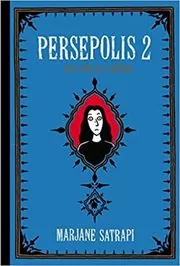Life of Pi Summary
Author: Yann Martel
This page offers our Life of Pi summary (Yann Martel's book). It opens with an overview of the book, and follows with a concise chapter-by-chapter summary.
Drafted with AI assistance and reviewed by a human editor.
As an Amazon Associate, we earn from qualifying purchases (at no extra cost to you).
This book has 1 recommender!
Overview
In a small café in Pondicherry, India, a restless Canadian traveler meets an elderly man, Francis Adirubasamy, who promises to tell him a tale so extraordinary that it will restore his faith in God. The narrative revolves around a young man named Pi Patel, who recounts his life from his mature years, reminiscing about his youthful days in Toronto. Pi reveals his fascination with religion and zoology, his training in swimming by Adirubasamy, and his unique name, inspired by a famous Parisian swimming club. He also details his father's former occupation as the owner of Pondicherry Zoo, where Pi and his brother, Ravi, learned about the perilous nature of animals. Raised a Hindu, Pi later finds solace in Christianity and Islam, practicing all three faiths simultaneously. Due to political unrest in India, Pi's family decides to emigrate to Canada on a cargo ship filled with animals from their zoo, embarking on their journey on June 21, 1977.
Their voyage takes a disastrous turn when their ship begins to sink. In the ensuing chaos, Pi finds himself on a lifeboat with a zebra, an orangutan, and a hyena. Soon his family and the ship's crew are lost to the sea. In a shocking turn of events, a tiger named Richard Parker surfaces from the depths of the lifeboat. The tiger swiftly kills the other animals, leaving Pi and Richard Parker as the sole survivors. Stranded at sea, Pi survives on emergency rations, filtered seawater, and caught sea life, while also taking care of the tiger, whom he manages to tame and control.
The narrative takes a bizarre twist when Pi, suffering from dehydration-induced blindness, encounters another blind castaway. When the man attempts to attack Pi for food, Richard Parker kills him. Later, they come across a peculiar island full of trees growing directly on vegetation and inhabited by a large population of meerkats. They temporarily reside there until Pi finds human teeth in a tree's fruit, deducing that the island devours humans, prompting them to return to sea. Their ordeal finally ends when they reach a beach in Mexico, where Richard Parker disappears into the wilderness, and locals take Pi to a hospital. Japanese officials later interrogate Pi, seeking insight on the ship's demise. Unconvinced by his initial account, they prompt him to re-tell his story, replacing the animals with humans. Despite their skepticism, they ultimately commend Pi for surviving an extensive period with a full-grown tiger.
Chapter 1
part 1
The narrative begins with Pi's assertion that he has experienced profound suffering. Though he doesn't divulge the exact cause, he mentions continuing with his religious and zoological studies. His fascination with animals, specifically sloths, is revealed. We understand that he is employed and has a deep affection for Canada and India, and a mysterious character named Richard Parker.
Pi recalls his time in a Mexican hospital, where he was well cared for. After a week, he was walking and adjusting to normal life, including being criticized for his Indian eating habits. The author briefly describes Pi as a middle-aged, fast-talking man.
His Indian childhood memories include his swimming lessons with family friend, Mamaji, and his peculiar name, inspired by Mamaji's favorite pool, the Piscine Molitor in Paris. His father, Santosh Patel, managed the Pondicherry Zoo, which Pi considered a paradise. He felt passionate about the animals' routines and defended the concept of zoos against critics, despite the fact that the Pondicherry Zoo has since closed.
Pi was teased for his name, Piscine, which children twisted into 'Pissing.' He eventually convinced everyone to call him Pi. The author notes that Pi's Canadian kitchen is well-stocked.
Pi reminisces about his favorite teacher, Mr. Satish Kumar, an atheist communist. Pi felt close to him, viewing atheism as another form of faith. However, he struggled with agnostics, whom he found lacking in conviction.
Pi's father used a graphic demonstration, feeding a live goat to a tiger, to instill in his sons the dangers of wild animals. Pi discusses the importance of understanding each animal's individual temperament and needs for effective zoo management, including the concept of territoriality.
The author describes Pi's home, filled with religious symbols from Hinduism, Christianity, and Islam. Pi was born a Hindu and remains devoted to the religion. However, he also recalls becoming a Christian at fourteen after hearing the story of Christ, and later becoming a Muslim at fifteen after meeting a Muslim baker and mystic, Mr. Satish Kumar.
The author reflects on Pi's religious philosophies. Pi discusses how atheists and agnostics might approach death differently, favoring a 'better story' over logical explanations. He also recalls a confrontation between his multiple religious mentors, and his parents' surprise at his multi-faith practices. Despite the subsequent teasing from his brother, Ravi, Pi remained steadfast in his spiritual journey.
Political issues in India during the 1970s pushed Pi's father to move the family to Canada. The author introduces Meena Patel, Pi's wife, and notes his surprise at her existence. The author describes an outing to the Pondicherry Zoo with both Mr. Kumars, leading to a discussion on zoomorphism.
Finally, Pi recounts his father selling some animals from the zoo and arranging to transport the rest with them to Canada. Despite his mother's apprehension, Pi was excited to embark on the journey. The author meets Pi's children, Nikhil and Usha, suggesting a happy ending to Pi's story.
Chapter 2
part 2
When the ship goes down, Pi finds himself on a lifeboat amid terrifying chaos. He sees a Bengal tiger, Richard Parker, struggling in the water and encourages it to save itself. The tiger gets aboard the lifeboat, making Pi aware of the risk of sharing a confined space with a wild animal.
Rewinding to the moments before the shipwreck, Pi wakes up to a loud noise. He ventures onto the deck in the rain, and becomes frightened by the ship's unusual tilt and groaning sounds. Unable to reach his family below deck due to the water-filled stairwell, he ends up back on deck where crewmen throw him overboard. He lands on a partially covered lifeboat, which is soon joined by a zebra.
The narrative proceeds to the point where Pi jumps off the lifeboat to escape Richard Parker, only to be terrified by the sight of a shark. Despite the shark and the tiger, Pi manages to hoist himself onto an oar hanging off the ship. He watches the ship sink with no other survivors in sight.
While on the lifeboat, Pi encounters a hyena and then an orangutan named Orange Juice. He initially fears the hyena, but decides its aggressiveness is preferable to the stealth of a jungle cat. Pi believes a distress signal about the shipwreck must be out and rescue is imminent. As night falls, the animals remain silent and Pi holds onto hope.
As dawn breaks, Pi witnesses the horrifying sight of the hyena eating the zebra's broken leg. Pi learns to adapt to this new reality, finding humor in Orange Juice's seasickness and even attempting to fish. His initial attempts are unsuccessful, but eventually he overcomes his pacifist tendencies and kills a fish. This becomes his new way of life, fishing and feeding himself and Richard Parker, while awaiting rescue.
Suddenly, the hyena attacks the zebra and then Orange Juice. Despite her brave fight, Orange Juice is decapitated. Pi, in fear and grief, falls into a delusional sleep. When he wakes up, he faces the grim reality of his situation and decides to build a raft for distance from Richard Parker. During a tense encounter, Pi throws a rat that had run up to his head at Richard Parker, buying him time to escape to his raft.
Pi's days are filled with survival tasks. He catches rainwater for drinking, checks the raft's knots, and contemplates ways of killing Richard Parker. Despite his awareness that Bengal tigers can swim and drink saline water, Pi remains hopeful.
One day, Pi decides to tame Richard Parker. Using a whistle and displaying dominant behavior, he manages to make Richard Parker lie down. Despite the harsh conditions, Pi manages to find a way to survive, even catching a four-foot mako shark and feeding it to Richard Parker.
A violent storm causes Pi to lose his raft and damages the lifeboat. He starts repairs and resumes his survival routine. However, his physical and mental condition deteriorates. He goes blind and starts hallucinating about a voice that turns out to be a French-speaking castaway.
Stumbling upon an island, Pi and Richard Parker rest and regain their strength. However, Pi realizes the island is carnivorous and leaves with Richard Parker. The lifeboat finally washes ashore on a Mexican beach. Richard Parker disappears into the jungle, leaving Pi to be rescued by villagers.
Chapter 3
part 3
Tomohiro Okamoto and Atsuro Chiba, two Maritime Department officials from the Japanese Ministry of Transport, are told to interview Pi, the only survivor of the Tsimtsum, while on a separate mission in California. Their aim is to investigate the ship's sinking. Exhausted after a 41-hour journey littered with mishaps, they arrive to interview Pi and their dialogue, partly in Japanese, is translated and presented in a different font.
The interview, recorded on February 19, 1978, begins with Okamoto introducing himself and his assistant Chiba. Pi jokes about the contrast in their travels, stating his was disastrous. They had viewed the lifeboat earlier, and now ask Pi to share his experiences. Chapter 97 simply consists of: “The story.” They find Pi's account intriguing but express doubt in Japanese.
Upon their return from a break, they express disbelief in Pi's tale, citing examples such as floating bananas. Pi proves them wrong by successfully floating two bananas. The questioning continues, with Pi ingeniously using the example of bonsai trees to counter their dispute of his story. He explains the absence of Richard Parker, the tiger, by stating that wild creatures are skilled at staying hidden.
When asked if they enjoyed his story, they affirmatively respond but ask for the truth. Pi shares an alternate story where the boat's occupants are himself, his mother, a cruel French cook, and a young Chinese sailor. The sailor's leg is amputated after an injury, and upon his death, the cook cannibalizes him. Pi's mother is murdered by the cook, who Pi ultimately kills and consumes to survive. He then tells Okamoto and Chiba, “Solitude began. I turned to God. I survived.”
Okamoto and Chiba, although shocked, observe similarities between both stories. Despite further questioning, Pi provides no clues about the ship's sinking. When asked to choose between the two stories, they prefer the one involving animals. Okamoto's report, later sent to Martel, acknowledges the uniqueness of Pi's survival tale with the Bengal tiger.
Edited by
Software engineer whose passion for tracking book recommendations from podcasts inspired the creation of MRB.
Lead investor at 3one4 Capital whose startup expertise and love for books helped shaped MRB and its growth.







Comments
Did we miss something? Have feedback?
Help us improve this page by sharing your thoughts